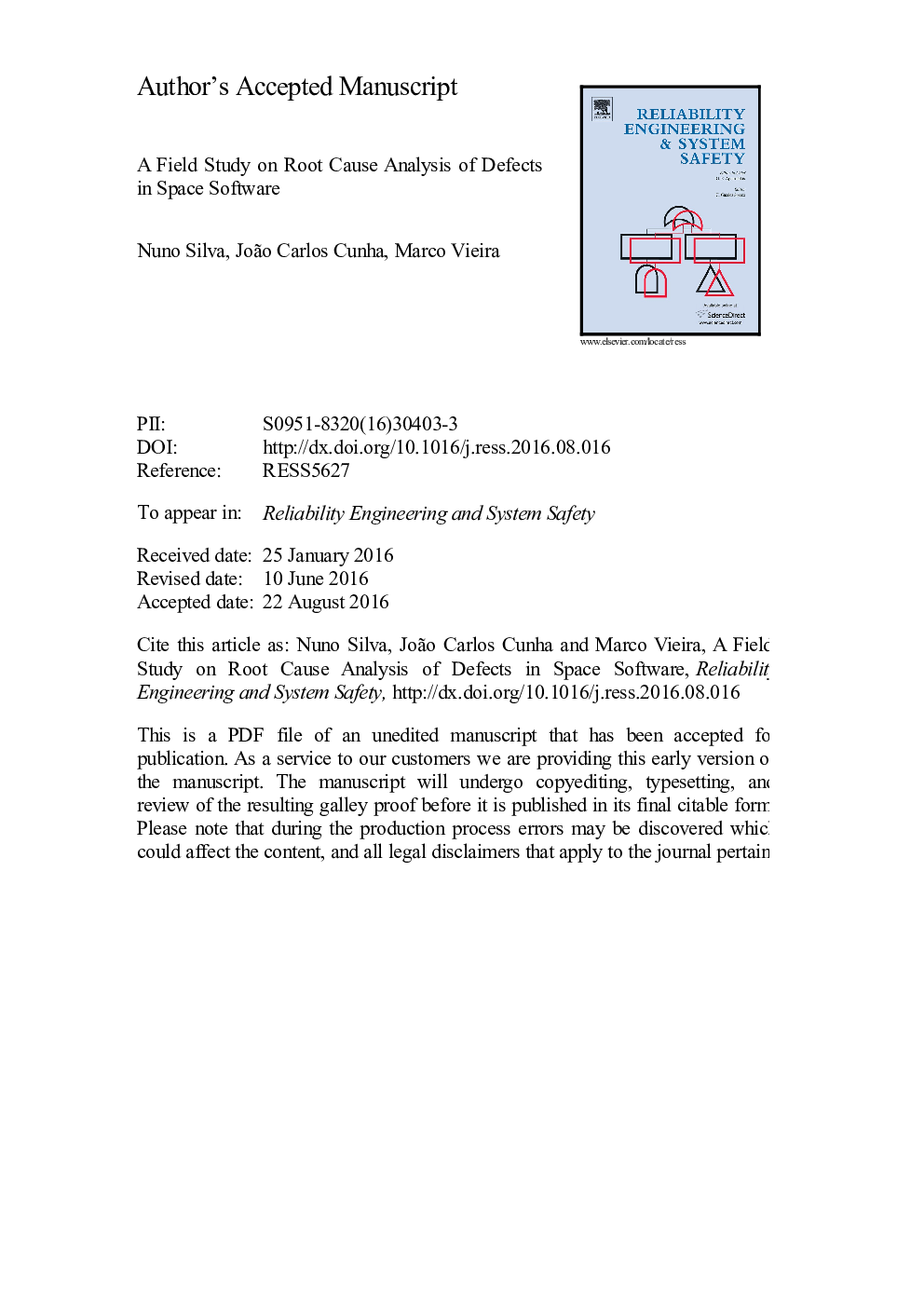| Article ID | Journal | Published Year | Pages | File Type |
|---|---|---|---|---|
| 5019591 | Reliability Engineering & System Safety | 2017 | 31 Pages |
Abstract
Critical systems, such as space systems, are developed under strict requirements envisaging high integrity in accordance to specific standards. For such software systems, an independent assessment is put into effect (Independent Software Verification and Validation - ISVV) after the regular development lifecycle and V&V activities, aiming at finding residual faults and raising confidence in the software. However, it has been observed that there is still a significant number of defects remaining at this stage, questioning the effectiveness of the previous engineering processes. This paper presents a root cause analysis of 1070 defects found in four space software projects during ISVV, by applying an improved Orthogonal Defect Classification (ODC) taxonomy and examining the defect types, triggers and impacts, in order to identify why they reached such a later stage in the development. The paper also puts forward proposals for modifications to both the software development (to prevent defects) and the V&V activities (to better detect defects) and an assessment methodology for future works on root cause analysis.
Related Topics
Physical Sciences and Engineering
Engineering
Mechanical Engineering
Authors
Nuno Silva, João Carlos Cunha, Marco Vieira,
